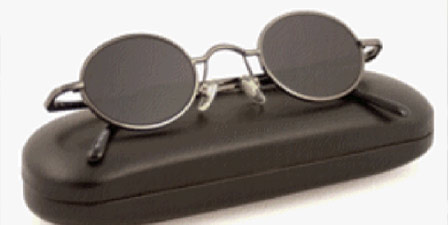Doctors’ Recommendations
I make a point of discussing the doctors’ recommendations with a patient. Whether they saw one of our optometrists or have brought in a prescription, most doctors have begun a dialogue with the patient and can provide insight about how a patient wants to use their glasses. Hints that these conversations have taken place include modified prescriptions, as a prescription written for specifically for fine needle working. Or sometimes the recommendations are written on the prescription specifying a blue-blocking anti-reflective treatment for computer work.
These recommendations serve as a good starting point, but are no means a replacement to learning about a patients’ lifestyle. If no recommendations are provided, it is the job of the skilled optician to ask questions and gain insight about what a patient wants from their corrective lenses. By learning about their world, you can better understand their needs and expectations for their eyewear. Maybe a patient was recommended a progressive lens, but they have no desire to wear glasses full-time. In this case, custom corrective readers might be a better solution. Or the opposite often happens when a doctor writes a prescription for reading lenses and the patient wants to wear their glasses most of the time. Learning this information early on helps avoid remakes and patient dissatisfaction with the product provided to them. It might even make a patient rethink how they want to use their glasses. Doctor recommendations can be a valuable tool to new wearers. Someone might not understand how a progressive lens works; especially if it’s the first time they’ve been told they need glasses. The skilled optician should be able to explain lens options and the benefits of different types of lenses much more than the doctor can. Remember – the doctors’ job is to check the health of the patient’s eyes and to provide you with a correct prescription. It is the job of the optician to measure and fit glasses to get them seeing correctly.
Lens Selection
After the frame has been selected, it’s time to discuss lenses. Maybe this discussion has started already, and perhaps a patient understands they need a hi-index lens with a premium anti-reflective treatment. If you’ve reached this point, you may only have to take measurements and record the order. If not, this is time to change hats and be the authority on lenses for optimum vision. This discussion is more efficient when the optician understands what the patient doesn’t like about their current glasses, so they can guide them to the best visual solution.


In some cases, patients may desire an option that is not in their favor. A good example is a full-time contact lens wearer who wants a budget lens because their glasses are backup and worn only in case of emergencies. These patients may opt out of a thinner lens option. Or the patient who only wears the glasses for night driving might decide that an anti-reflective treatment won’t make any difference to their vision. It is the job of the optician to recommend solutions, but ultimately the patient will decide how to build their lenses. This discussion should trigger the patient to think about saving weight with thinner lenses, or realizing their night vision would be clear but distracting without proper anti-reflective treatments. In the case of the first-time wearer, they might not see the value of particular lens enhancements since they have not used them before. It is the job of the optician to educate the patient about the best lens choices to ensure a satisfactory final product. If a patient decides that they want to opt out of certain options, be sure to reiterate their benefits and to accurately document your discussion. This could be important the next time they decide to purchase glasses from your office or come in to complain about their heavy glasses.
Once a patient receives and uses the completed glasses, they might understand why they needed to consider photochromic lenses as a solution when working outside in their garden. Having a flexible change or restyle policy can be a great advantage to providing quality solutions to your patient. Most optical labs will allow the original job to be credited towards a remake if enhancements are made, so having a flexible remake policy is always in both parties’ favor. Just ensure the patient has no other complaints (issues with seg height, for example) before remaking any job to ensure that you don’t pay for costly remakes.

Conclusion
Remember that you are acting as an authority to create a final product. There may be other factors involved: how long a patient wears their glasses, their budget, current status of insurance, the need of a second pair (office lenses, sunglasses, etc.) and more. A part-time glasses wearer may have different requirements for their glasses than a patient who wears their glasses all day. Ultimately there is no wrong way to make glasses as long as the wearer can see satisfactorily. But it is the opticians’ job to recommend the best possible solutions for the wearer and yield the best possible eyewear to dispense.
This ensures that you will never have a returning patient tell you how much they don’t like their glasses ever again.
 |
Alex Bennett, ABOM. Alex graduated from Colorado State University in 2007 with a degree in Natural Resources Management. He has been an optician since 2008 and currently works in the Denver metro area. Alex is also a contributing blogger for DailyOptician.com and is completing prerequisite courses in order to qualify for optometry school. In his free time, he enjoys running, rock climbing and traveling.













